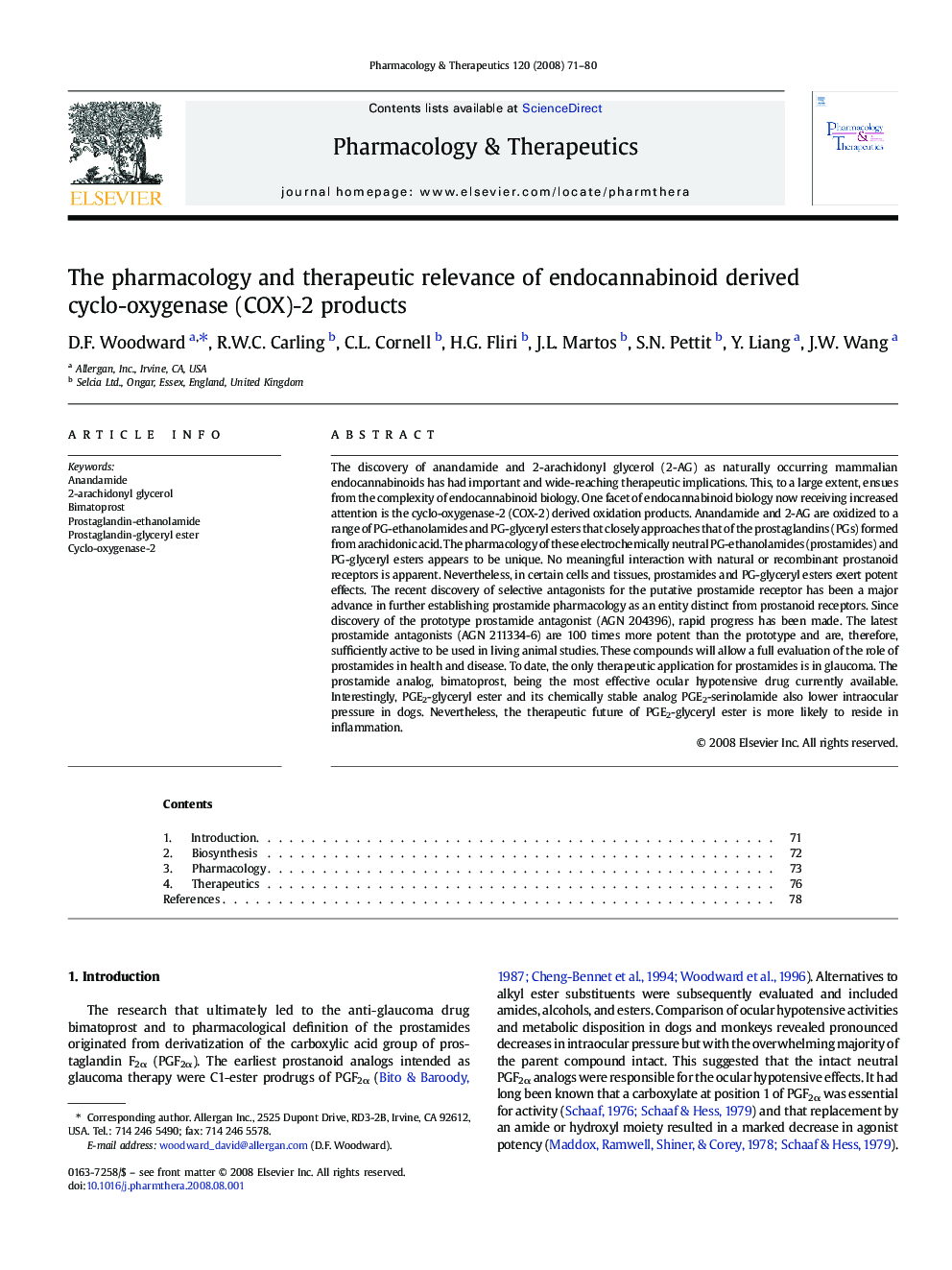| Article ID | Journal | Published Year | Pages | File Type |
|---|---|---|---|---|
| 2563758 | Pharmacology & Therapeutics | 2008 | 10 Pages |
The discovery of anandamide and 2-arachidonyl glycerol (2-AG) as naturally occurring mammalian endocannabinoids has had important and wide-reaching therapeutic implications. This, to a large extent, ensues from the complexity of endocannabinoid biology. One facet of endocannabinoid biology now receiving increased attention is the cyclo-oxygenase-2 (COX-2) derived oxidation products. Anandamide and 2-AG are oxidized to a range of PG-ethanolamides and PG-glyceryl esters that closely approaches that of the prostaglandins (PGs) formed from arachidonic acid. The pharmacology of these electrochemically neutral PG-ethanolamides (prostamides) and PG-glyceryl esters appears to be unique. No meaningful interaction with natural or recombinant prostanoid receptors is apparent. Nevertheless, in certain cells and tissues, prostamides and PG-glyceryl esters exert potent effects. The recent discovery of selective antagonists for the putative prostamide receptor has been a major advance in further establishing prostamide pharmacology as an entity distinct from prostanoid receptors. Since discovery of the prototype prostamide antagonist (AGN 204396), rapid progress has been made. The latest prostamide antagonists (AGN 211334-6) are 100 times more potent than the prototype and are, therefore, sufficiently active to be used in living animal studies. These compounds will allow a full evaluation of the role of prostamides in health and disease. To date, the only therapeutic application for prostamides is in glaucoma. The prostamide analog, bimatoprost, being the most effective ocular hypotensive drug currently available. Interestingly, PGE2-glyceryl ester and its chemically stable analog PGE2-serinolamide also lower intraocular pressure in dogs. Nevertheless, the therapeutic future of PGE2-glyceryl ester is more likely to reside in inflammation.
